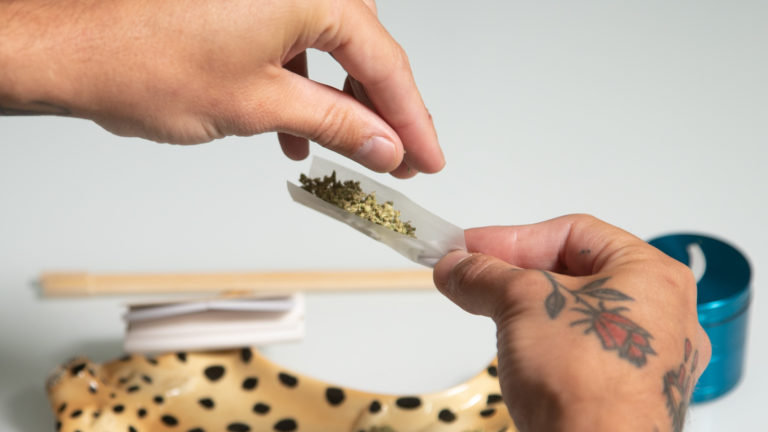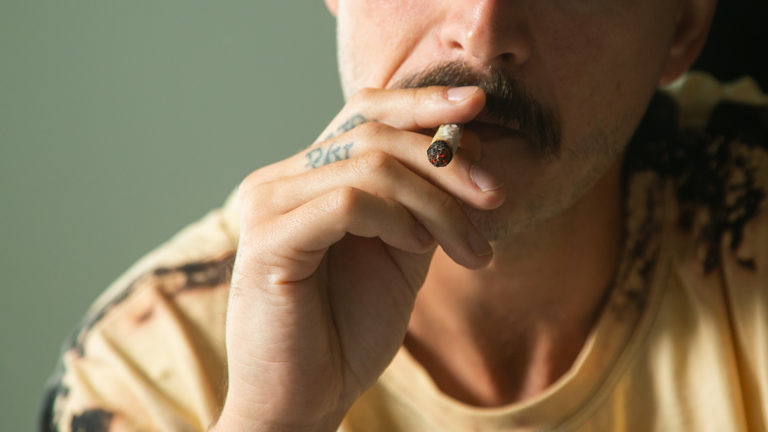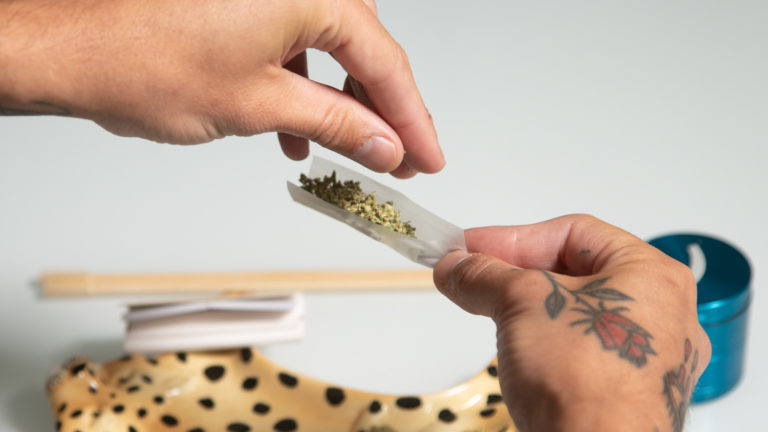If you’re smoking a joint to enjoy the psychoactive effects of THC, then you might want to know how much of the potent cannabinoid is in a typical smoke. Here you’ll learn how to calculate the amount of THC in a joint and understand what percentage of the cannabinoid your body is actually processing.
How do you calculate the milligrams of THC in a joint?
First, let’s define a key term: bioavailability. Bioavailability refers to the proportionate active effect of any drug or substance entering the body. In simpler terms, your body is unlikely to absorb all of the available compounds in any given substance. Prescription medications, vitamin supplements, and food and beverages all have a certain bioavailability when circulating through the body. THC also has a measurable amount of bioavailability, depending on how much your body absorbs rather than how much is present in the joint.

To calculate how much THC is in a joint, Dr. Adie Rae, a neuroscientist and scientific adviser to Weedmaps, offered the following formulas and sample calculations:
The weight of the joint (in milligrams) multiplied by potency/THC percentage equals total milligrams of THC.
One gram = 1000 milligrams.
Example: The difference between a half gram and full gram joint of the same 20% THC flower:
1 gram: 1000 mg x 0.20 = 200 mg
Half gram: 500 mg x 0.20 = 100 mg
If you’d rather skip the math equations, a modern joint may contain between 60 to 150 mg of THC or more, representing a sharp increase from the approximately 10 mg common in the 1970s.
The above formulas tell us how much THC is in a joint, but they tell us nothing about how much your body is absorbing from the joint. According to Rae, this number will depend on several factors that differ among individuals. These factors include:
- Composition of the joint, i.e., ratio of THC to CBD
- How much THC is wasted in sidestream smoke which wafts off at the end of a joint without being consumed, unlike mainstream smoke which is what you directly inhale and exhale
- Smoking topography, aka your puff technique
- Bioavailability (the proportion of THC that is able to activate the brain, after being introduced into the body and entering the bloodstream)
Rae elaborated on the key components of mainstream and sidestream smoke, saying, “The ratio of mainstream to sidestream smoke produced by a joint is highly variable because of differences in puff techniques. There are several factors in an individual puff. The volume of smoke per puff is typically about 35 milliliters but can be as big as 55 milliliters (for context, the volume of a shot glass is about 40 milliliters). This volume is determined by the force and amount of time a person inhales.”
Mainstream smoke is also affected by the frequency of inhalations, as Rae said, “Puffing more frequently increases the amount of THC consumed in mainstream smoke, and thus diminishes the amount of THC wasted in sidestream smoke.”
Ultimately, bioavailability is calculated by measuring the THC in the blood, and comparing that to how much THC you started with in the joint. Referencing research published in 2007 in the journal Chemistry & Biodiversity, Rae added, “Bioavailability is highly variable for inhalation: experiments in humans show that it ranges from 2% to 56% depending on the person.”
To illustrate bioavailability, Rae provided the following examples using one gram joints and half gram joints.
- One gram joint = 200 mg THC. On the low end, 2%: 200 x 0.02 = 4 mg. On the high end, 56%: 200 x 0.56 = 112 mg.
The bioavailable THC in a 1 gram joint with 20% THC is between 4 and 112 milligrams.
- Half gram joint = 100 mg THC. On the low end, 2%: 100 x 0.02 = 2 mg. On the high end, 56%: 100 x 0.56 = 56 mg.
The bioavailable THC in a half-gram joint with 20% THC is between 2 and 56 milligrams.
How does bioavailability affect your high?
In fact, it’s not as simple as bioavailability affecting your high. Rae explained, “Puff techniques affect your bioavailability. Your high is simply dose-dependent.”

In other words, the more efficient your puff technique, the higher you get. Is there a way to increase your bioavailability to get higher? Rae explained, “The secret breath is the best method I know to intentionally increase the bioavailability and efficiency of your puff technique.”
Proponents of the secret breath method claim that one inhalation of cannabis can produce the effect of five or even ten inhalations. The technique involves drawing a series of deliberate breaths through pursed lips. Breathing in this manner may expand the alveoli in the lungs, allowing the consumer to take in more THC.
However, Rae offered one caveat: “I would not recommend this for beginners — only for the seasoned toker!”
How much THC do you lose when you inhale smoke?
There’s only one way to know for sure how much THC you’ve lost: get your blood drawn and tested. And if you can do that, Rae supplied the simple formula to figure out the answer: “You subtract the milligrams of THC in your blood from the milligrams of THC you started with.”
The bottom line on THC and bioavailability
How much THC your body absorbs is contingent on several factors, some of which (like puff technique) are within your control. Regardless of how much THC becomes bioactive in your brain, today’s joints are potent and likely to get a novice consumer high. All consumers should exercise caution while experimenting with puff techniques and consult with a medical professional when in doubt.

